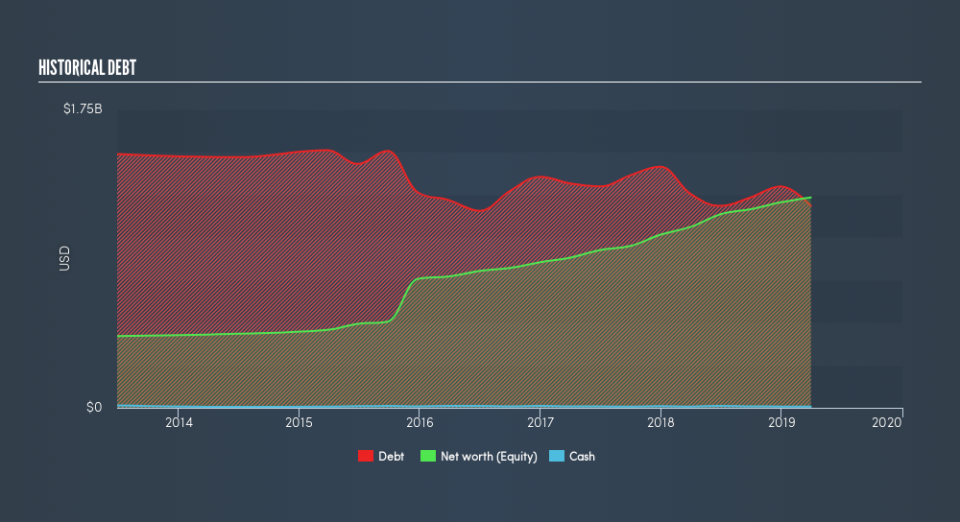What Investors Should Know About Performance Food Group Company's (NYSE:PFGC) Financial Strength

Want to participate in a short research study? Help shape the future of investing tools and you could win a $250 gift card!
While small-cap stocks, such as Performance Food Group Company (NYSE:PFGC) with its market cap of US$4.2b, are popular for their explosive growth, investors should also be aware of their balance sheet to judge whether the company can survive a downturn. Evaluating financial health as part of your investment thesis is vital, as mismanagement of capital can lead to bankruptcies, which occur at a higher rate for small-caps. Let's work through some financial health checks you may wish to consider if you're interested in this stock. Nevertheless, this is not a comprehensive overview, so I suggest you dig deeper yourself into PFGC here.
Does PFGC Produce Much Cash Relative To Its Debt?
PFGC's debt levels have fallen from US$1.3b to US$1.2b over the last 12 months , which also accounts for long term debt. With this debt payback, PFGC's cash and short-term investments stands at US$7.7m , ready to be used for running the business. On top of this, PFGC has produced cash from operations of US$398m over the same time period, leading to an operating cash to total debt ratio of 34%, meaning that PFGC’s debt is appropriately covered by operating cash.
Does PFGC’s liquid assets cover its short-term commitments?
At the current liabilities level of US$1.6b, the company has maintained a safe level of current assets to meet its obligations, with the current ratio last standing at 1.45x. The current ratio is calculated by dividing current assets by current liabilities. Generally, for Consumer Retailing companies, this is a reasonable ratio since there's a sufficient cash cushion without leaving too much capital idle or in low-earning investments.
Is PFGC’s debt level acceptable?
PFGC is a relatively highly levered company with a debt-to-equity of 96%. This is a bit unusual for a small-cap stock, since they generally have a harder time borrowing than large more established companies. We can check to see whether PFGC is able to meet its debt obligations by looking at the net interest coverage ratio. A company generating earnings before interest and tax (EBIT) at least three times its net interest payments is considered financially sound. In PFGC's, case, the ratio of 4.35x suggests that interest is appropriately covered, which means that debtors may be willing to loan the company more money, giving PFGC ample headroom to grow its debt facilities.
Next Steps:
PFGC’s high cash coverage means that, although its debt levels are high, the company is able to utilise its borrowings efficiently in order to generate cash flow. Since there is also no concerns around PFGC's liquidity needs, this may be its optimal capital structure for the time being. Keep in mind I haven't considered other factors such as how PFGC has been performing in the past. You should continue to research Performance Food Group to get a more holistic view of the small-cap by looking at:
Future Outlook: What are well-informed industry analysts predicting for PFGC’s future growth? Take a look at our free research report of analyst consensus for PFGC’s outlook.
Valuation: What is PFGC worth today? Is the stock undervalued, even when its growth outlook is factored into its intrinsic value? The intrinsic value infographic in our free research report helps visualize whether PFGC is currently mispriced by the market.
Other High-Performing Stocks: Are there other stocks that provide better prospects with proven track records? Explore our free list of these great stocks here.
We aim to bring you long-term focused research analysis driven by fundamental data. Note that our analysis may not factor in the latest price-sensitive company announcements or qualitative material.
If you spot an error that warrants correction, please contact the editor at editorial-team@simplywallst.com. This article by Simply Wall St is general in nature. It does not constitute a recommendation to buy or sell any stock, and does not take account of your objectives, or your financial situation. Simply Wall St has no position in the stocks mentioned. Thank you for reading.

